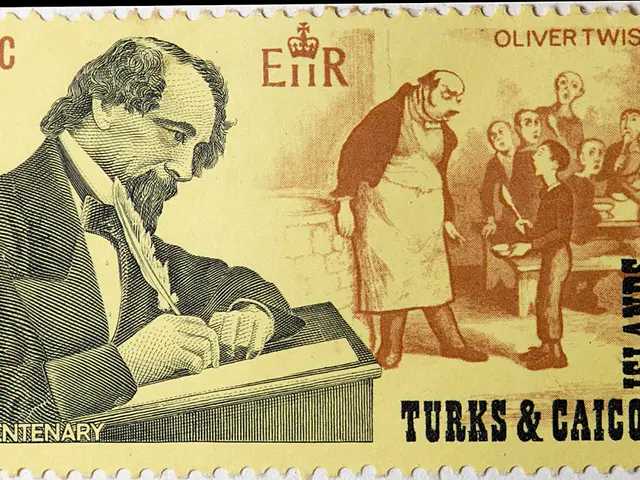Struggling Retention Among Female Workers: The Financial Implications of Australia's Gender Wage Disparity for Businesses
In a significant step towards gender equality, Australia is addressing the persistent gender pay gap through a range of strategies targeting occupational segregation, unpaid work, and the undervaluation of the care economy.
The latest findings reveal that, on average, women earn 88 cents for every dollar men earn, equating to a difference of $242.30 per week. This disparity, driven by systemic factors such as occupational segregation, differences in working patterns, and historical biases that undervalue women's work, has been a long-standing issue.
However, the Australian government and employers are taking action. One key strategy involves raising wages in female-dominated sectors, particularly the care economy, which has historically been undervalued and underpaid. The Albanese Labor Government has focused on improving wages for care workers and investing in skills and training, such as fee-free TAFE, to boost women's earnings.
Improved gender pay gap transparency and reporting are also being implemented. The Workplace Gender Equality Agency (WGEA) provides detailed, employer-reported data that identifies problem areas, encouraging employers to take evidence-informed actions to close gaps. Since reporting became mandatory, there has been a measurable drop in the overall gender pay gap and growth in women in leadership roles.
Increasing women’s representation in leadership and better-paying jobs is another focus. Around 90% of private sector employers report having gender equality policies, and flexible work arrangements that help women balance paid work with caring roles are becoming more common.
Addressing occupational segregation is also crucial. This involves supporting women into diverse industries and leadership roles while encouraging employers to examine pay structures systematically. Some state governments, like South Australia, have taskforces making recommendations including supporting SMEs to address pay gaps, and establishing research centers on economic inequality.
Reforms supporting superannuation equity and recognition of unpaid caring work are also part of the equation. The gender pay gap and lifetime unpaid care responsibilities lead to women having 25% lower superannuation balances on average. Attention to this long-term consequence is part of policy discussions.
These combined approaches are showing progress, with Australia’s gender pay gap reaching a historic low of 11.5% in 2025 and increased female workforce participation. However, challenges remain in fully overcoming occupational segregation and deeply ingrained undervaluation of care work. Continuous monitoring, employer accountability, and policy focus on the care economy are central to further closing the gap.
Today, National Equal Pay Day, represents 50 additional days into the financial year that women must work to earn the same as men. The Accumulated 10-year gender pay gap stands at 30.7%. For First Nations women, this accumulated gap is even wider at 38.1%.
The Workplace Gender Equality (Gender Equality Targets) Instrument 2025 requires employers with 500 or more employees to select and commit to achieving specific gender equality targets. Yet, 84.7% of Australian employers still have a gender pay gap outside the optimal range of +/-5%.
The path forward requires businesses to move from passive compliance to active leadership, governments to implement bold and equitable policies, and individuals to challenge ingrained gender biases. Sorrel Kesby, co-founder of Evenbetter AI, noted that the survey results demonstrate that "pay equity is a key driver of growth and a strategic priority for business leaders."
By nearly every measure, the gender pay gap remains a widespread and systemic issue. But with concerted effort and strategic action, Australia is hopeful that it can close the gap and achieve true gender equality in the workplace.
Read also:
- Changes in manufacturing and consumer habits driven by cosmetic certification processes
- Expanding Bio-based Polypropylene Market to Showcase a Compound Annual Growth Rate (CAGR) of 26.5% till 2034
- victory for Central Java communities in landmark lawsuit against textile conglomerate over pollution issues
- Safety for Young Motorists: Apps Designed to Aid Teenage Drivers and Their Guardians








